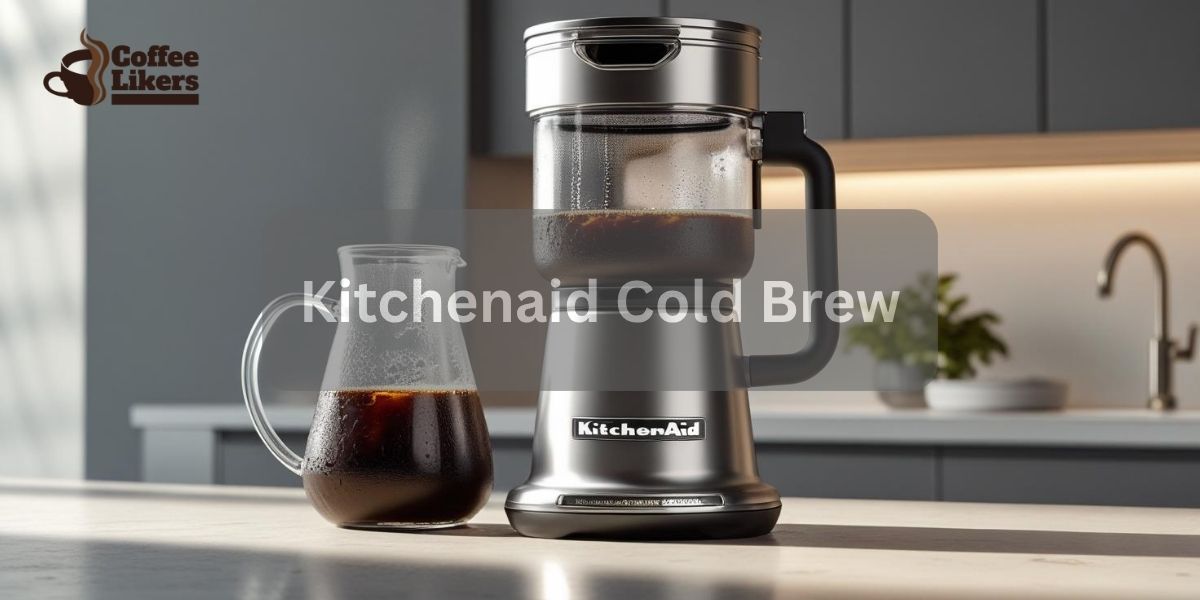Introduction
Necessary Details of Descaling OXO Coffee Maker With VinegarIf you’re a coffee lover, you know how important it is to keep your coffee maker in top condition. Over time, mineral deposits from water can build up inside the coffee machine, affecting the taste and quality of your brew.
That’s why it’s essential to descale your OXO coffee maker regularly, using a simple but powerful solution: Descaling your coffee maker with vinegar is a cost-effective and eco-friendly way to remove mineral buildup and keep your machine running smoothly like an oxo descaling solution.
In this guide, we’ll walk you to descaling oxo coffee maker with vinegar and through the step-by-step process of descaling your OXO coffee maker with vinegar, so you can enjoy a perfect cup of coffee every time.
What is Descaling a Coffee Maker?
Descaling a coffee maker refers to the process of removing mineral content buildup, such as calcium and limescale, that accumulates inside the machine over time and cleaning my coffee maker. These minerals come from the water that is used to brew coffee and can affect the taste and quality of your coffee, as well as the overall performance of your machine.
Descaling oxo coffee maker with vinegar, descaling is important to keep your coffee maker functioning properly and produce high-quality coffee that makes your coffee taste better. It typically involves running a solution of a descaling agent, such as vinegar or citric acid, through the machine to dissolve and remove the mineral buildup. The frequency of descaling depends on the hardness of the water in your area and how often you use the coffee maker.
Can I Use Vinegar to Descale My OXO Coffee Maker?
Yes, you can use vinegar to descale your OXO coffee maker. Vinegar is a safe and effective natural descaling agent that can dissolve mineral buildup inside the machine. To descale your OXO coffee maker with vinegar, you will need to mix equal parts of white vinegar and water and run the solution through the machine.
Using a 1:1 ratio of water and vinegar is recommended, but you can adjust the ratio depending on the level of buildup in your machine. After running the vinegar solution through the machine, you must rinse it thoroughly with clean water to remove any traces of vinegar taste.
Descaling OXO coffee maker with vinegar is an affordable and eco-friendly way to keep your machine functioning properly and producing high-quality coffee.
Descaling OXO Coffee Maker with Vinegar to Clean a Coffee Pot?
Here’s a step-by-step guide on how to clean and descale your OXO coffee maker with vinegar:
Materials:
- White vinegar
- Water
- Measuring cup
- Clean water
10 Ultimate Instructions:
- Empty any remaining water from the coffee maker and make sure it’s turned off and unplugged.
- Mix equal parts white vinegar and water in a measuring cup.
- Pour the vinegar solution into the water reservoir of the coffee maker.
- Place a clean carafe or mug under the brew basket to collect the solution.
- Turn on the coffee maker and let the solution brew until the reservoir is empty.
- Once the brewing cycle is complete, turn off the coffee maker and let it cool for about 15 minutes.
- Discard the used vinegar solution and rinse the water reservoir and carafe with clean water.
- Refill the water reservoir with clean water and run a brewing cycle without any coffee grounds to rinse the machine.
- Repeat the rinse cycle with clean water until there are no traces of vinegar taste.
- Wipe the exterior of the coffee maker with a damp cloth to remove any remaining residue.
Note: The frequency of descaling your coffee maker depends on how often you use it and the hardness of the water in your area. It is recommended to descale your coffee maker every 3-6 months or as needed.

Can You Run Straight Vinegar Through a Coffee Maker?
It is not recommended to run straight vinegar through an OXO coffee maker as it is too acidic and can cause damage to the machine. Instead, it is recommended to dilute the vinegar with equal parts of water to create a descaling solution that is safe and effective for removing mineral buildup from the coffee maker.
A 1:1 ratio of vinegar and water is the most commonly used mixture for descaling coffee makers. It’s important to follow the manufacturer’s instructions and use the recommended descaling agent and ratio for your specific coffee maker model to avoid any damage to the machine.
After running the vinegar solution through the machine, it is important to rinse it thoroughly with clean water to remove any traces of vinegar taste before using it to brew coffee.
How Long Does Vinegar Take to Descale an OXO Coffee Maker?
The length of time it takes for vinegar to descale a coffee maker depends on the level of mineral buildup inside the machine. In general, a typical descaling cycle using vinegar takes about 20-30 minutes to complete.
However, if there is heavy mineral buildup inside the coffee maker, it may take longer for the vinegar solution to dissolve and remove the deposits. It’s important to follow the manufacturer’s instructions and run the descaling cycle for the recommended amount of time to ensure that all mineral buildup is removed from the machine.
After the descaling cycle is complete, it’s important to rinse the machine thoroughly with clean water to remove any traces of vinegar taste before using it to brew coffee.
What Vinegar is Best for Cleaning Coffee Maker?
White vinegar is the best type of vinegar for cleaning a coffee maker as it is clear, colorless, and has a high level of acidity. Its acidic properties make it an effective natural descaling agent that can dissolve mineral buildup inside the coffee maker.
Additionally, white vinegar is a readily available and affordable option for cleaning coffee makers. It is important to note that using other types of vinegar, such as apple cider vinegar or balsamic vinegar, may not be as effective for descaling and may leave a residue that affects the taste of the coffee.
When using white vinegar for descaling, it is recommended to dilute it with equal parts of water to create a safe and effective cleaning solution.
What Vinegar is Best for Cleaning Coffee Maker?
White vinegar is the best type of vinegar for cleaning a coffee maker as it is clear, colorless, and has a high level of acidity. Its acidic properties make it an effective natural descaling agent that can dissolve mineral buildup inside the coffee maker.
Additionally, white vinegar is a readily available and affordable option for cleaning coffee makers. It is important to note that using other types of vinegar, such as apple cider vinegar or balsamic vinegar, may not be as effective for descaling and may leave a residue that affects the taste of the coffee.
When using white vinegar for descaling, it is recommended to dilute it with equal parts of water to create a safe and effective cleaning solution for your coffee machine.
Conclusion
Descaling your OXO coffee maker with vinegar is an effective and affordable way to remove mineral buildup and ensure that your machine continues to brew great-tasting coffee. It’s important to follow the manufacturer’s instructions and dilute the vinegar with equal parts of water to create a safe and effective cleaning solution.
Regular descaling of your coffee maker can help extend its lifespan and prevent any issues that may arise from mineral buildup. With proper maintenance and care, your OXO coffee maker can continue to provide you with delicious coffee for years to come.
FAQ:
1. Is Coffee Descaler Better than Vinegar for Descaling Solution?
The coffee descaler is specially formulated for descaling coffee makers and is designed to be more effective and less abrasive than using vinegar. While vinegar can be used as a natural descaling agent, a coffee descaler is specifically designed to break down and remove the buildup of mineral deposits that can occur inside the coffee maker more efficiently.
Additionally, coffee descaler is less acidic than vinegar and is formulated to be safe for use on coffee makers and other household appliances. While vinegar is an affordable and readily available alternative to coffee descaler, it may not be as effective at removing heavy mineral buildup and may leave a lingering taste or smell that affects the taste of your coffee.
Therefore, if you want to ensure the longevity of your coffee maker and maintain its performance, using a coffee descaler may be a better choice than using vinegar.
2. What is the Disadvantage of Vinegar in Cleaning Coffee Pots?
While vinegar is an effective natural cleaning agent, it also has some potential disadvantages that should be considered.
Firstly, vinegar has a strong and unpleasant smell that can linger in the area where it is used. This can be a problem for people with sensitive noses or for those who do not like the smell of vinegar.
Secondly, vinegar is acidic and can be corrosive to certain surfaces or materials, especially when used undiluted or in large quantities. For example, it is not recommended to use vinegar to clean natural stone surfaces or hardwood floors as it can damage or discolor the surface.
Finally, vinegar is not effective at removing certain types of stains, such as grease or oil stains. In such cases, a more specialized cleaner may be needed to effectively remove the stain.
Despite these disadvantages, vinegar remains a popular and effective natural cleaning agent that is readily available and affordable for household use. It is important to use vinegar in moderation and to follow the instructions carefully to avoid any potential negative effects.
3. What is the Difference Between Cleaning Vinegar and Regular Vinegar for Clean a Coffee Maker?
Cleaning vinegar and regular vinegar are both types of vinegar, but they differ in their acidity level and intended use.
Regular vinegar, also known as white vinegar, is a multi-purpose vinegar that can be used for cooking, pickling, and cleaning. It has a standard acidity level of about 5% and is widely available at grocery stores and supermarkets.
Cleaning vinegar, on the other hand, has a higher acidity level than regular vinegar and is specifically formulated for cleaning purposes. It typically has an acidity level of 6% or higher, making it more effective at dissolving mineral buildup, stains, and grime. Cleaning vinegar may also contain additional ingredients such as citrus oils or natural scents to improve its cleaning power and mask the strong smell of vinegar.
While both types of vinegar can be used for cleaning purposes, cleaning vinegar is more effective for heavy-duty cleaning tasks such as descaling coffee makers or cleaning tile grout. However, due to its higher acidity level, cleaning vinegar should be used with caution and may not be suitable for use on delicate surfaces or materials. It’s important to read the label carefully and follow the manufacturer’s instructions when using cleaning vinegar.
4. Will Coffee Tastes Like Vinegar After Descale a Coffee Maker?
If the coffee maker is properly cleaned and rinsed after descaling, the coffee should not taste like vinegar. However, if the vinegar solution is not completely rinsed out of the coffee maker, it may leave a residual vinegar taste or smell that can affect the flavor of the coffee.
To ensure that there is no residual vinegar taste in your coffee, it is important to thoroughly rinse the coffee maker with clean water after the descaling process. It may be necessary to run several cycles of clean water through the machine to completely remove any trace of vinegar.
Additionally, it is recommended to run a cycle of plain water through the machine before brewing your first pot of coffee to ensure that any remaining vinegar is completely flushed out.
By following these steps, you can effectively be descaling oxo coffee maker with vinegar and without leaving any residual vinegar taste or smell in your coffee.





Leave a Reply